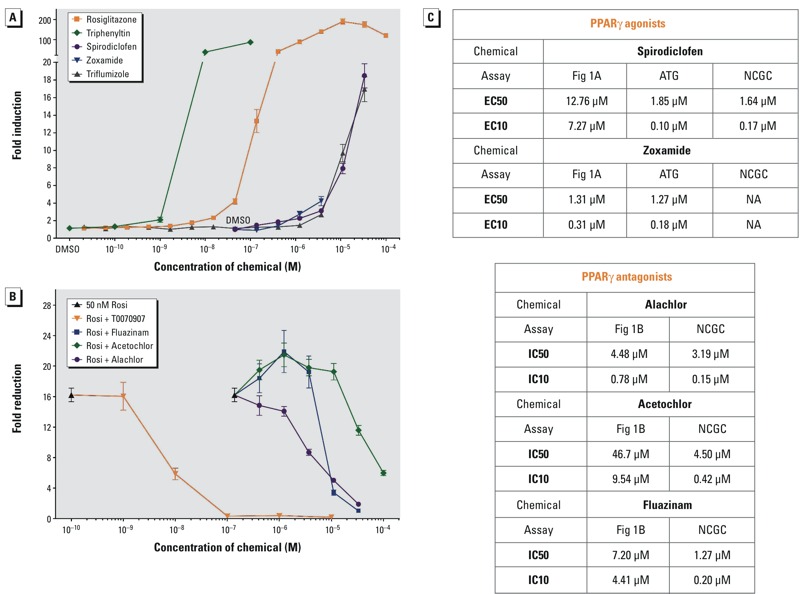Figure 1.

ToxCast™ Chemical Activity on PPARγ. The ability of a graded dose series of ToxCast™ chemicals to (A) activate or (B) antagonize GAL4-mPPARγ was tested in transiently transfected COS7 cells. (A, B) Data points are averages of triplicate transfections (three biological replicates). Cytotoxicity, as measured by decreased β-galactosidase activity was observed at 100 μM for spirodiclofen, triflumizole, alachlor, and fluazinam, ≥ 10 μM for zoxamide, and ≥ 1 μM for triphenyltin. Data are depicted as (A) fold induction or (B) reduction over vehicle (0.05% DMSO) controls ± SEM. (A) ToxCast™ chemicals were tested in 3-fold serial dilutions from 100 μM through 0.137 μM, with the final data point being 0.05% DMSO. Rosiglitazone serves as a positive control activator. (B) ToxCast™ chemicals were tested in 3-fold serial dilutions from 100 μM, in competition with 50 nM rosiglitazone (Rosi). T0070907 (2-chloro-5-nitro-N-4-pyridinylbenzamide) serves as a positive control PPARγ antagonist. (C) EC50, EC10, IC50, and IC10 values calculated from A and B are reported and compared to commercial assays (see Figure S1). Note: ATG, Attagene GAL-PPARγ activation assay; NCGC, GeneBLAzer® agonist (EC values) or antagonist (IC values) assays. Triphenyltin was previously published (Kanayama et al. 2005).
